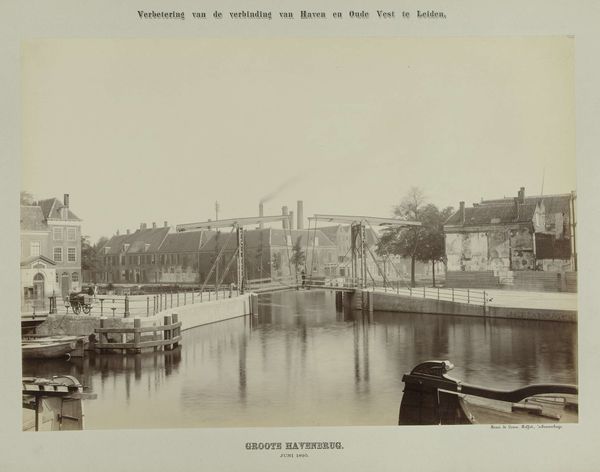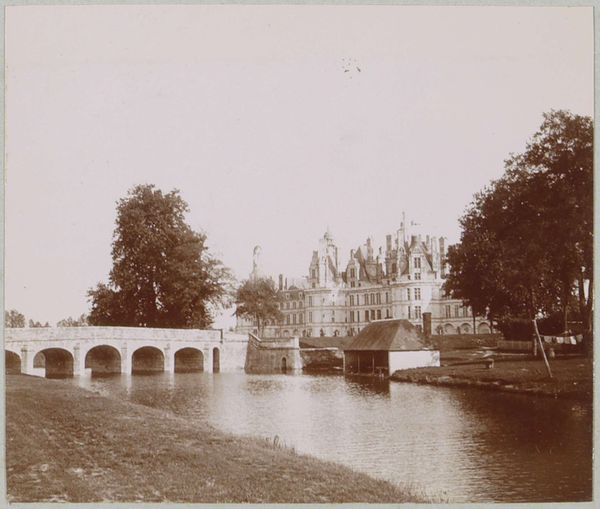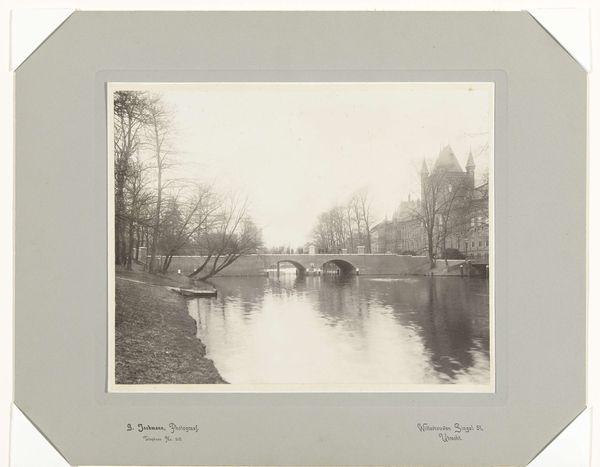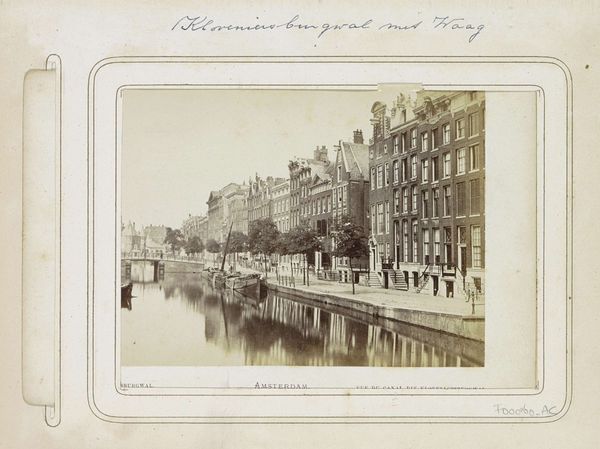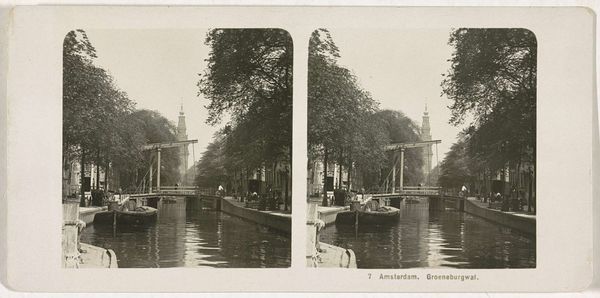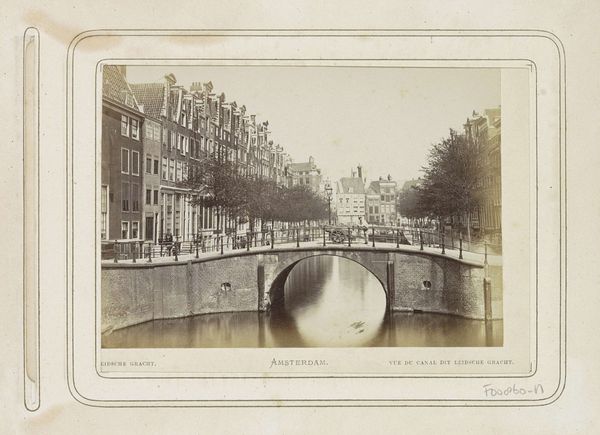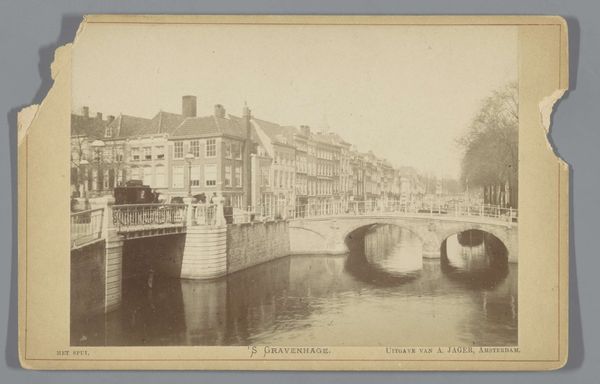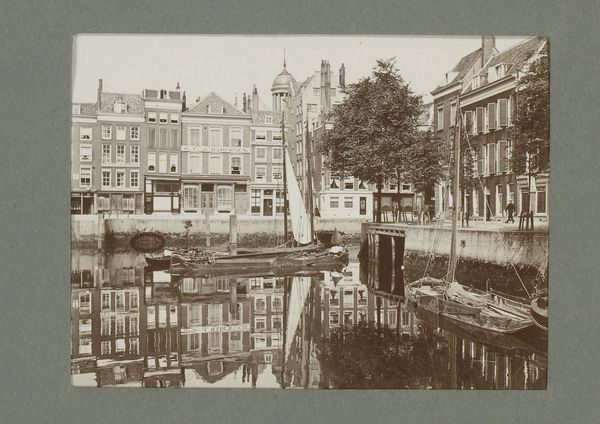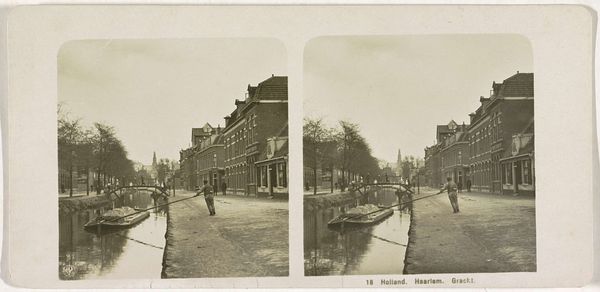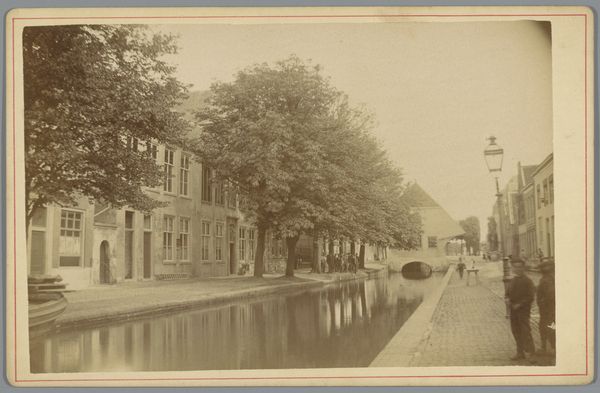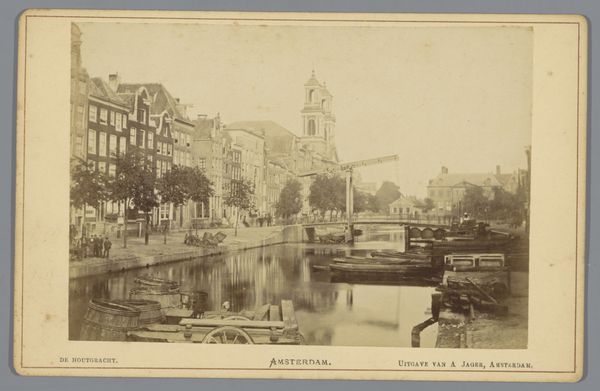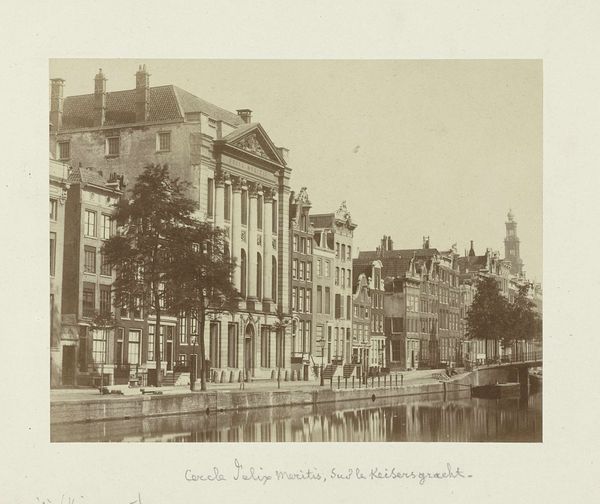
photography, gelatin-silver-print
#
dutch-golden-age
#
landscape
#
photography
#
historical photography
#
gelatin-silver-print
#
19th century
#
cityscape
#
realism
Dimensions: height 223 mm, width 536 mm
Copyright: Rijks Museum: Open Domain
Curator: Looking at this, the sepia tones create an immediate atmosphere of a bygone era. The light, though seemingly natural, gives the scene a measured, almost theatrical quality. Editor: Indeed. We are viewing "Grote Havenbrug te Leiden," a gelatin silver print from 1894 by Henri de Louw. As a historical document, this photograph encapsulates a specific moment in the development of Leiden's urban infrastructure. Curator: The way the bridge cuts across the frame—almost bisecting the image horizontally—creates a stark division, doesn’t it? Below, we have the heavy earth and placid water, and above, a densely packed scene of buildings and people. I find that contrast quite striking. Editor: The people are the point, aren't they? Consider the social implications. Who are these individuals gathered on the bridge? What does their presence signify in the context of late 19th-century Dutch society? Likely townspeople marking a public advancement. Curator: Well, there is that interesting massing. Their dark forms create a visual counterpoint to the lighter buildings, almost as if the people are the active ingredient animating the static architecture. Editor: Absolutely. And how the construction subtly underlines themes of progress, development, and civic pride inherent in this period's self-representation. Look closer to observe a staged depiction intended to shape public opinion. Curator: It is not purely documentary. It strikes me that de Louw is making considered choices in composition to heighten its visual impact. The textural contrast of the smooth water versus the coarse soil anchors the work for me, establishing depth through those textural variances. Editor: Certainly, it offers insights into photographic techniques that sought to capture both the factual reality and idealizing tendencies prevalent in the art of that period. Curator: And, speaking of "facts," observe how the horizon line is so precisely placed? That division generates visual tension in that horizontal split—as if implying an unspoken dialogue between stasis and movement, earth and sky. Editor: Well observed! This conversation about Henri de Louw’s “Grote Havenbrug te Leiden” highlights how the photographic image serves as an invaluable tool for analyzing society and art in an environment under transition. Curator: I agree completely. Focusing on its material form brings a timeless reading. I am taken with how the artistic image—despite documenting that reality—remains as visually arresting as ever.
Comments
No comments
Be the first to comment and join the conversation on the ultimate creative platform.
